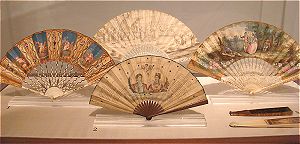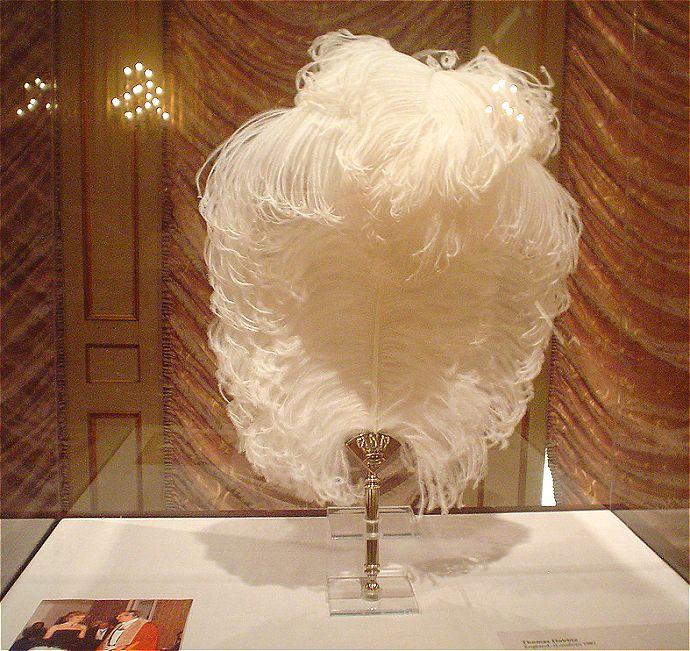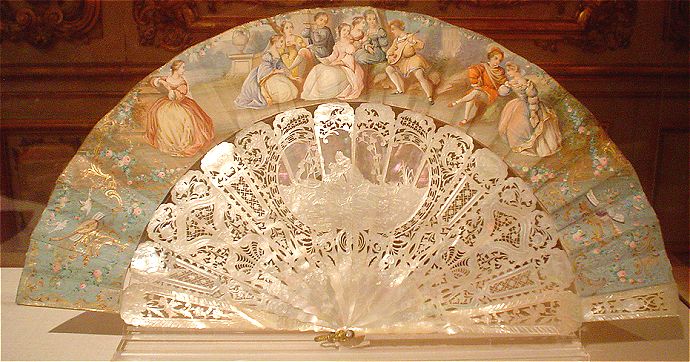FAN COLLECTION
HISTORY: The word “fan” is derived from the Latin word “vannus,” a Roman tool for winnowing grain. Egypt claims the earliest known fan, dating to 1355 BC. It was a very long-handled standard used to fan their God-kings. Fans are well-documented. Catherine de Medici (1519-1589) is known to have had fans in her dowry at the time of her marriage to King Henry II of France. Such fans often contained masterpieces in miniature with handles carved of ivory, gold, or silver, and inset with jewels. Queen Elizabeth I of England had 27 rigid fans at the time of her death in 1603. Folding fans are smaller than rigid fans, designed to imitate the action of a wing opening and closing. 18th c: The 18th c was the golden age of fan-making, with a variety of material being used: kidskin, woven silk, paper. The fans were decorated with miniature paintings of portraits, romantic and domestic scenes. Mythological and classical subjects were popular, especially as the stones related to the theme of love. Guard sticks protect the delicate fan leaf, and can be delicately carved or encrusted with jewels. 19th c: Fans were still precious, and commissioned as works of art. Fans were mass-produced by the 2nd quarter of the 19th c, thus becoming more affordable to the general public. Fan makers incorporated prints, etchings and engravings, woodcuts and lithographs. Fans were printed as memory aids, and served as souvenirs from vacations and special events. 20th c: Many spectacular fans were created for high fashion, with ostrich plumes and mother-of-pearl sticks. Fine lace was also used, and fans were often personalized with monograms. Advertising fans became popular in the 1920s. Rigid cardboard fans were given away by funeral homes, theaters, churches, fashion houses, and restaurants. The Museum is fortunate to have a fan commemorative of the marriage of Prince Charles and Lady Diana Spencer. Twenty-five of these fans were created, each with 3 white ostrich plumes fixed on a sterling silver handle with gold insignia and inscription. Only three are in American collections.
|


